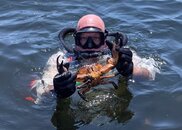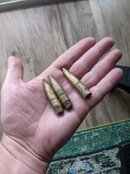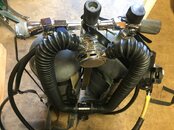I still think using a double hose should be done purist style with no BC or plate of any kind, just strap the tank directly on your body. Just my opinion, but you know what they say about opinions...
Actually (IMHO) attaching the harness directly to the cylinder with just bands was a very bad idea, because the shoulder straps are attached too low, just below the tank shoulder. This allows the top of the cylinder to move too much side-to-side. I have seen divers with the cylinder on their back diagonally and rocking (if they are swimming fast).
The only way to control the side motion of the top of the cylinder is by attaching the harness to a plate that extends up past the shoulder of the cylinder. The real trick is how to do that while not interfering with the can of a double hose regulator.
We have seen a few solutions that work, either a thin plate (like the Freedom plate), a somewhat flexible plate (like the Zeagle Express), or a plate with a cutout specifically for the double-hose (like the double hose plate). The thin vintage backpacks also worked great (The Nemrod and White Stag did not crack like the US Divers). All of these solutions are (IMHO) actually better than the original harness attached to the cylinder with just metal bands; they control the cylinder better and place the DH demand valve in the preferred location.






